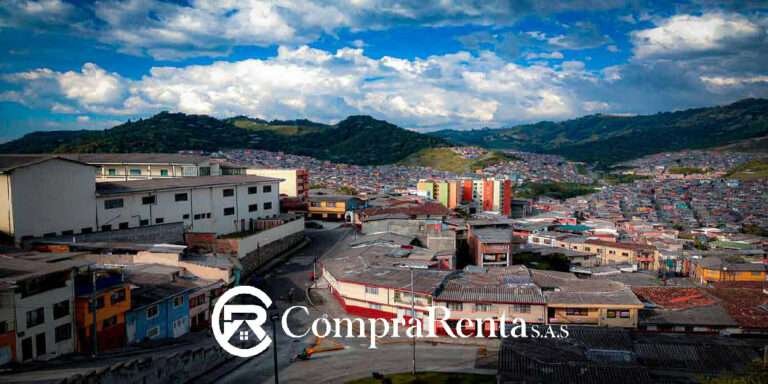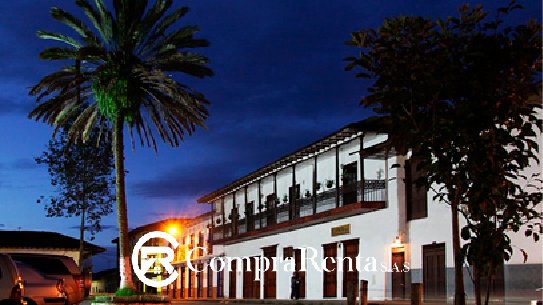Caldas Department

The name of the department honours the Colombian scientist and patriot Francisco José de Caldas (1768 – 1816) who, in his fight for the independence of Colombia, was shot by the royalist army on October 28 of 1816.
Caldas is one of the thirty-two departments that make up the Republic of Colombia. Its capital is Manizales. It is in the center of the country. It belongs to the coffee region and the Paisa region. It was created in 1905, because of the reform to the political-administrative division proposed by General Rafael Reyes Prieto, who assumed the presidency in 1904. Until 1966 it included the territories occupied by the departments of Risaralda and Quindío, which were segregated. This union is popularly known as The Old Caldas, The Great Caldas, or The Green Butterfly.
In this department it is possible to find all the thermal floors, from the warm valleys of the Magdalena River and the Cauca River to the perpetual snows of the Snowy Ruiz (Spanish: Nevado del Ruiz). The mountainous topography predominates.
The department of Caldas has 27 municipalities organized territorially in six subregions, 34 townships and 13 police inspections, in addition to numerous hamlets and populated places, the following are the municipalities of the department:
Upper West
- Filadelfia
- La Merced
- Marmato
- Riosucio
- Supía
Upper East
- Manzanares
- Marquetalia
- Marulanda
- Pensilvania
Lower West
- Anserma
- Belalcázar
- Risaralda
- San José
- Viterbo
South Central
- Chinchiná
- Manizales
- Neira
- Palestina
- Villamaría
Magdalena Caldense
- La Dorada
- Norcasia
- Samaná
- Victoria
North
- Aguadas
- Aranzazu
- Pácora
- Salamina
Manizales is known for being a cultured and educated city, and it has even been titled as the University City of Colombia. However, only so far different sectors of Manizales society are joining forces to make it the educational city of the country and the preferred destination for Colombian and foreign students to study. The capital of the Caldenses wants to be part of the list of university cities such as Boston (United States), Barcelona (Spain), Valparaíso (Chile), Salamanca (Spain), Linkoping (Sweden), among others.
The Caldas capital has three accredited universities: Nacional, Caldas and Manizales. The Autonomous and Catholic is in the process of acquiring this recognition.
Their stadium is called Pologrande. Sports activities are carried out exclusively in Manizales, for having the most suitable sports venues in the department; Caldas is the headquarters of several teams in the different tournaments of the country and the birthplace of important athletes, it has participated in the National Sports Games since its inception and has hosted on two occasions, it has a team in the first division: Once Caldas, also with semi-professional teams in minor leagues or youth championships, three teams represent Caldas and Manizales in three different tournaments.
Infrastructure of Transportation despite the mountainous geography of Manizales, the city has a network of avenues and highways that connect the different sectors of the city, as well as with the different regions of the country. It also has a transport terminal located on the Pan-American highway, in the Los Cámbulos sector, from which vehicles are dispatched to various cities in the country. The presence of taxis is massive and sufficient, the service is controlled by a meter that rates the charge according to the distance and time of the journey. Manizales has a national airport called Nubia Airport, which has a runwayde aproximadamente 1.400 metros y presta sus servicios desde las 6 de la mañana hasta las 6 de la tarde. Debido a las condiciones climáticas, a menudo está cerrado debido a la poca visibilidad. Por su parte, la existencia de edificios de más de dos plantas cerca de la cabecera y las dificultades topográficas hacen inviable la ampliación del aeropuerto. Actualmente se ejecuta la construcción de un nuevo aeropuerto bajo la jurisdicción del municipio de Palestina. Conocido como Aeropuerto Internacional del Café, el nuevo terminal aéreo prevé recibir vuelos tanto nacionales como internacionales. Manizales cuenta con un sistema de transporte público por teleférico .El sistema, inaugurado en 2009, cuenta actualmente con dos líneas que registran la ciudad de norte a sur: la línea Fundadores-Cambulos, que conecta el centro de la ciudad con la terminal de transporte terrestre del sur; y la línea Cambulos-Villamaría, que conecta a Manizales con la vecina ciudad de Villamaría.

The temperature of the department of Caldas varies according to the altitude and the relief, altered by the trade winds from the northeast and southeast. On the eastern flank of the Central Mountain Range the rainiest sectors are located, between 1,200 and 1,600 meters high, where precipitation exceeds 3,000 mm per year. The sectors with less than 1500 mm per year are located over 3500 m in height, in the Snowy National Natural Park, which includes the highest heights of the department. The distribution of the thermal floors is warm 32% of the total of the department, temperate 36%, cold 23% and the bioclimatic floor of moor 9%.
The department of Caldas has a great diversity of fauna and flora, the Andes Condor, the hummingbird, the spectacled bear and the tapir are some of the most outstanding species of the moor or the Snowy, on the other hand in forests of La Dorada and Norcasia, live foxes, anteaters, deer and howler monkeys, without counting on the livestock fauna of this region, while in the municipalities surrounding Manizales, such as Villamaría, Chinchiná among others, hundreds of birds invite you to contemplate the beautiful of the region mostly hummingbirds. In terms of flora, the Frailejón, Aguaceral or water mattress and Loricaria or false coral in the Snowy and its surrounding moors, in the rest of the department, is the most representative, in addition you can find the Colombian pine, seven leather, Myrtle which It is the emblem tree of Manizales, also the Yarumo well known in the city, black laurel, cumin, encenillo, the famous wax palm and guadua forests, from which they extract and transform into beautiful products, these comprise or inhabit all the Thermal floors these constitute parts of the Caldense arboreal heritage.

In addition to the coffee cultural landscape as a world heritage site, there are other sites in the department that are declared national monuments of Colombia, assets of national cultural interest and intangible cultural heritage, appointed by the Ministry of Culture through the Council.
National Heritage: these are the most representative:
- Historic Center of Aguadas.
- Historic Center of Salamina.
- Historic Center of Marmato.
- Historic Center of Manizales.
- Chapel La Enea (Manizales).
- Juan XXIII School Concentration (Manizales).
- Herveo Tower and Cable Station (Manizales).
- School of Fine Arts (Manizales).
- Railway Station (Manizales).
- Railway Station (Chinchina).
- Railway Station (La Dorada).
- Carnival of Riosucio.

The economy of the department is diverse, this given to a great extent by the amplitude of ecosystems and climates, that the Caldense territory offers, expanding the possibilities in its economy; the service provision sector represented by commerce, transportation, communications and banking, are a strong part of the department, and the agricultural sector represented mainly by coffee, represents an important source of income in addition to being an identifying element for the region, livestock is also present; In terms of manufacturing, the metalworking industry and textile and clothing products stand out, it also has the mining sector focused mainly on gold, currently tourism has acquired importance at the departmental level.
As an industry, textile and clothing products, chemicals, metalworking, wood, cement, and liquors stand out, the latter represented by The Liquor Industry de Caldas. Where the crystal brandy and old rum from Caldas are known.
Tourism is also present in the economy of the department especially in the South-Central sub-region where most of the tourist attractions are located, the greatest tourist attraction is the Snowy Ruiz (Spanish: Nevado del Ruiz) of The Snowy National Natural Park, its hot springs very close to the towns of Manizales and Villamaría also attracts tourists looking for relaxation, in Manizales the tourist sector is concentrated due to good communication, it is the tourist epicentre of Caldas, also in the Santagueda village (Palestine) is attractive for its good spas, also the different sports activities and the historical and striking architectural sites attract foreigners, in Chinchiná the coffee farms and their respective coffee plantations are visited by those who seek to know much more about coffee, different festivities of the municipalities are great attractions, among the most representatives are the Carnival of Riosucio and the Annual Fair of Manizales in January attract tourists generating significant profits.
The Annual Manizales Fair is the first and the largest, most important, and emblematic fair in the Colombian city of Manizales and in the American continent. Around the Bullfighting Festival that attracts great national and international figures with shows typical of the authentic Fiesta Brava, the Annual Manizales Fair recognized for its bullfighting season, its events, concerts, exhibitions and by the International Coffee Reign, parades, musical shows of the National Folklore among many other things that this epic fair offers in its extensive program full of great events.
